Understanding the multifaceted environmental factors contributing to ASD
Autism Spectrum Disorder (ASD) is a neurodevelopmental condition characterized by challenges in social interaction, communication, and behavior patterns. Its rising prevalence has prompted extensive research into its causes, revealing a complex interplay of genetic and environmental factors. While genetics play a significant role, environmental exposures during prenatal, perinatal, and early postnatal periods are equally influential. This article explores the environmental causes and risk factors associated with autism, shedding light on mechanisms, evidence, and misconceptions that shape current understanding.
The Genetic-Environmental Nexus in Autism
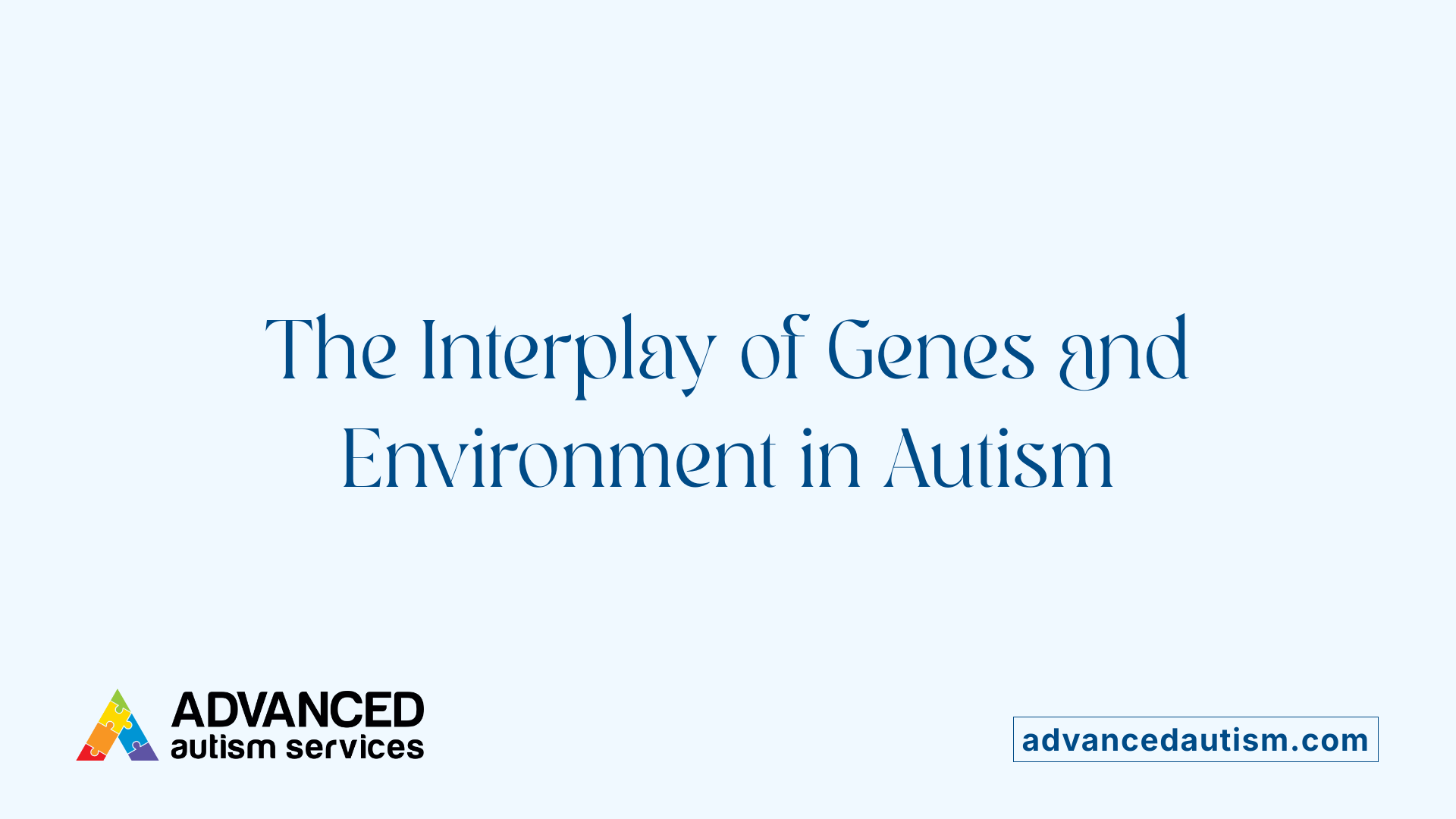
What is the relative contribution of genetics versus environment in autism?
Autism spectrum disorder (ASD) is understood to result from a dynamic interaction between genetic predispositions and environmental exposures. Studies estimate that heritability accounts for 50% to 90% of autism risk, with twin and family research demonstrating strong familial patterns. Evidence from twin studies indicates that genetics play a predominant role, with heritability estimates often cited around 80%. More than 400 genes have been linked to ASD, including those involved in brain development and neuronal communication, such as CHD8 and SHANK3. These genes affect neural connectivity and signaling pathways critical during early brain formation.
Nevertheless, environmental factors also significantly influence autism risk. Prenatal conditions such as maternal health issues—like obesity, diabetes, immune disorders—and exposures to toxins such as pesticides and heavy metals can disrupt typical neurodevelopment. Advanced parental age, especially paternal age over 34, has been associated with increased risk, partly due to the accumulation of de novo mutations. Family history and shared environmental exposures further modulate risk levels.
Environmental influences can alter gene expression through epigenetic mechanisms—including DNA methylation and histone modifications—affecting how genes involved in neurodevelopment function. Prenatal exposures, such as maternal infections, medication use (notably antiepileptics like valproic acid), and toxins like lead or mercury, can impair neural growth and connectivity. These factors may cause oxidative stress, inflammation, and hypoxia, which interfere with early brain development.
In summary, autism is not caused by genetics or environment alone but arises from a complex interplay where genetic susceptibility interacts with environmental exposures. This interaction influences neural circuitry during critical periods of brain development, ultimately contributing to the variability and severity seen across individuals with ASD.
Environmental Factors During Pregnancy and Birth
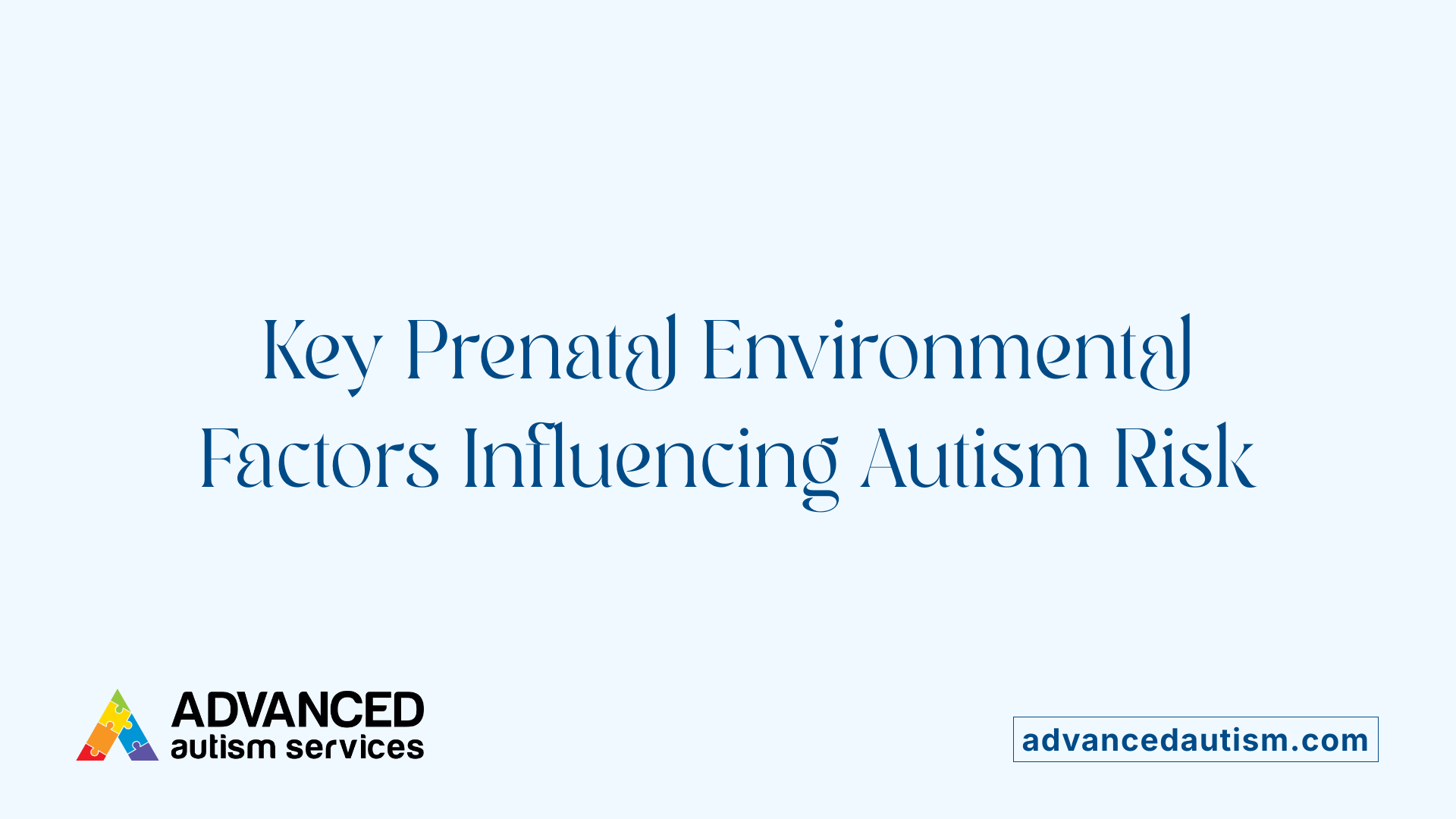
What are some known genetic and environmental risk factors for autism?
Genetic factors play a significant role in autism and include inherited conditions such as fragile X syndrome and tuberous sclerosis. These genetic differences can increase the likelihood of developing ASD. However, environmental influences are also crucial and include birth complications, advanced parental age at conception, and prenatal exposures such as toxins and pollutants.
Autism results from a mix of these factors affecting early brain development. While the exact causes are still being researched, the combination of inherited genetics and environmental exposures influences neural development before age 3, with symptoms usually emerging early in life. For some individuals, the causes remain elusive, but current evidence emphasizes the multifactorial nature of autism.
What are the main environmental risk factors associated with autism spectrum disorder (ASD)?
Several environmental factors are linked to an increased risk of ASD. Prenatal exposures include advanced parental age, especially paternal age over 34 years, maternal obesity, diabetes, and immune system disorders. Maternal inflammation during pregnancy and infections—viral or bacterial—also contribute to higher ASD risk.
Exposure to environmental contaminants like air pollution, pesticides, heavy metals (mercury, lead, arsenic), phthalates, and bisphenol A (BPA) has been associated with neurodevelopmental issues. Birth complications such as preterm birth, very low birth weight, and oxygen deprivation during delivery are also important risk factors.
Interestingly, maternal intake of protective nutrients like folic acid can decrease ASD likelihood. This highlights the complex interplay between risk and protective factors in prenatal environments.
| Risk Factors | Description | Additional Notes |
|---|---|---|
| Advanced parental age | Especially paternal age over 34 years | 18-21% increased risk per 10-year age increment |
| Maternal health conditions | Obesity, diabetes, immune disorders, inflammation during pregnancy | May influence fetal brain development |
| Birth complications | Oxygen deprivation, prematurity, low birth weight | Strongly linked with autism |
| Environmental toxicants | Heavy metals, pesticides, air pollution | Can induce genomic damage, affecting neurodevelopment |
| Protective factors | Folic acid, omega-3 fatty acids | Can reduce risk when supplemented appropriately |
Research continues to identify how these factors interact, emphasizing the importance of maternal health and environmental safety during pregnancy for optimal neurodevelopment.
Mechanisms of Environmental Impact on Neural Development
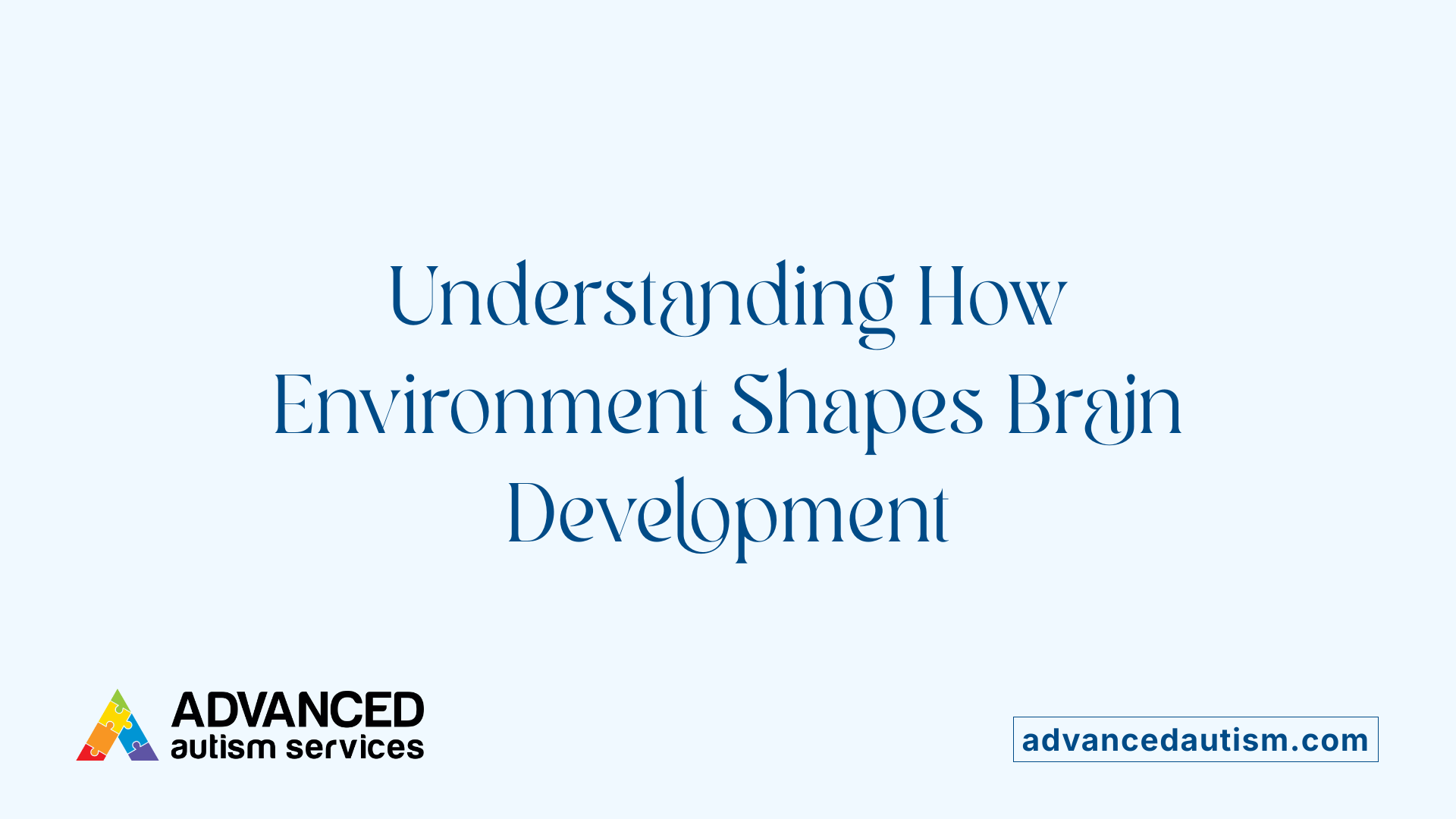
How do environmental factors influence people with autism?
Environmental factors can significantly affect autistic individuals, especially in how they perceive and respond to their surroundings. Many people with autism have heightened sensory sensitivities, making them more vulnerable to stimuli like bright lights, loud noises, or certain textures. Overwhelming environments can lead to distress and behavioral challenges.
To support autistic individuals, environments can be adapted by reducing sensory overload. This includes dimming lighting, lowering background noise, and providing sensory tools such as noise-canceling headphones or textured objects. Creating designated quiet zones or sensory-friendly spaces allows individuals to retreat when overwhelmed.
Organizations and institutions also adopt autism-friendly practices. Training staff on sensory sensitivities, using visual supports or social stories, and providing clear, accessible information helps create inclusive environments. These modifications reduce stress, promote comfort, and foster participation, making daily activities more manageable for autistic people.
What are the biological mechanisms through which environmental exposures impact autism risk?
Environmental exposures may influence the development of autism through multiple biological pathways. One primary mechanism is through oxidative stress, where toxic chemicals and pollutants generate reactive oxygen species, damaging cellular DNA, proteins, and lipids. This damage can interfere with normal brain development.
Another important process is genomic instability. Many environmental toxicants, such as heavy metals like mercury and lead, are mutagenic and genotoxic. They can cause DNA mutations, chromosomal rearrangements, or double-stranded breaks, leading to genetic variations associated with ASD.
Additionally, environmental agents can disrupt epigenetic mechanisms, including DNA methylation and histone modifications. These changes alter gene expression without changing the underlying DNA sequence. Since epigenetic regulation is critical during neurodevelopment, its disturbance can impair neural connectivity and signaling.
Heavy metals and chemicals like pesticides or phthalates often generate oxidative damage and affect hormonal pathways, further impacting brain development. Collectively, these molecular alterations during vulnerable periods of development can increase the likelihood of autism spectrum disorder.
| Environmental Factors | Biological Effects | Impact on Neurodevelopment |
|---|---|---|
| Heavy metals (mercury, lead) | Oxidative stress, DNA damage | Increased mutations, neural disruption |
| Pesticides, phthalates | Hormonal disruption, epigenetic changes | Impaired gene regulation, neural connectivity |
| Air pollution | Inflammation, oxidative damage | Altered neuroimmune interactions |
| Chemical toxins (BPA, PCBs) | DNA methylation changes | Disrupted neural signaling |
Understanding these mechanisms highlights the importance of reducing exposure to environmental toxicants during pregnancy and early childhood to promote healthier neurodevelopmental outcomes.
Toxicants and Pollutants Please explain
Environmental toxicants and pollutants have been scrutinized for their potential role in increasing autism risk, primarily because of their capacity to cause genetic damage or disrupt normal brain development.
Heavy metals like mercury and lead are among the most studied. Research has linked elevated levels of inorganic mercury and lead in children with ASD, suggesting neurotoxic effects such as interference with neural signaling and DNA damage. For instance, inorganic mercury can cause oxidative stress, impair DNA repair mechanisms, and induce mutations, all of which could contribute to developmental issues.
Air pollution, particularly particulate matter (PM), nitrogen dioxide, and ozone, has also been associated with increased autism risk. These pollutants can cause inflammation and oxidative stress in developing brains. Studies indicate that higher exposure levels during pregnancy and early childhood correlate with a greater likelihood of ASD, likely through mechanisms involving neuroinflammation and disruption of neural connectivity.
Endocrine-disrupting chemicals such as Bisphenol A (BPA), phthalates, and polychlorinated biphenyls (PCBs) are chemicals that interfere with hormonal pathways critical for brain development. Exposure to these chemicals during prenatal stages has been linked to behavioral and neurological alterations associated with autism. Their mutagenic potential and ability to interfere with endocrine functions make them concerning, although conclusive evidence about causality remains under investigation.
Environmental toxins often possess genotoxic and mutagenic potential. They can induce DNA double-stranded breaks, chromosomal rearrangements, and mutations. Many toxic agents, including chlorpyrifos (an organophosphate pesticide), vinyl chloride, and benzene, have shown capacity to cause genomic instability in model systems. Such genetic damage, especially during sensitive periods of fetal development, may increase the mutation rate in genes vital for brain development.
The mutagenic potential of these toxicants highlights their ability to induce de novo mutations—new genetic mutations not inherited from parents—an important factor in sporadic autism cases. Oxidative stress caused by heavy metals and chemicals can further damage DNA, amplifying the risk.
There is also concern that environmental exposure can impair the body's natural DNA repair responses, making it more difficult to rectify mutations. This process can lead to lasting genetic alterations that impact neurodevelopment.
Despite these findings, it is crucial to clarify that extensive scientific research has not established a direct causative link between environmental toxins alone and autism. However, their potential to induce genetic and neural disturbances underscores the importance of minimizing exposure, particularly during pregnancy.
Research continues to explore the gene-environment interactions that may predispose some children to ASD upon exposure to certain pollutants. The cumulative effects of multiple toxicants, especially in vulnerable populations, warrant ongoing study.
More information can be gathered by searching for "Environmental toxins and autism risk myths," as there are many misconceptions and overgeneralizations surrounding this topic.
In conclusion, while environmental toxins like heavy metals, air pollutants, and endocrine disruptors can contribute to genetic mutations and neurodevelopmental disturbances, comprehensive evidence linking them directly to autism is still emerging. Reducing exposure to these agents during critical windows of development is advisable to support overall health and potentially lower the risk of neurodevelopmental disorders.
Environmental Toxicants in Detail and Their Effects
What are some known environmental toxicants linked to autism?
Research has identified several environmental toxicants associated with an increased risk of autism spectrum disorder (ASD). Heavy metals, such as inorganic mercury and lead, are prominent among these. These metals are known to cause oxidative DNA damage and contribute to genomic instability, which can interfere with normal brain development.
Pesticides, including chlorpyrifos, are widely used in agriculture and have been linked to developmental neurotoxicity. Exposure during critical periods of fetal development may impair neural pathways and synaptic functioning.
Endocrine-disrupting chemicals (EDCs), which include bisphenol A (BPA), phthalates, flame retardants, and polychlorinated biphenyls (PCBs), interfere with hormonal signals essential for healthy brain development. Such chemicals can mimic or block hormones like estrogen and thyroid hormones, disrupting neurodevelopmental processes.
The biological impacts of these toxicants
These environmental agents can affect the developing brain through multiple mechanisms. For instance, heavy metals induce oxidative stress and DNA damage, which can mutate genes involved in neural growth. Pesticides may cause neurotoxic effects by impairing neurotransmitter systems, affecting neuronal migration, or inducing inflammation. Endocrine disruptors disturb hormonal balance, which is crucial during fetal brain development.
Research shows that exposure to these toxicants in utero or early childhood correlates with increases in autism risk. The biological pathways involve genetic mutations, epigenetic modifications, and interference with signaling pathways vital for neural connectivity.
Ongoing scientific efforts
Scientists are continuing to explore how these toxicants contribute to autism. Studies are focusing on elucidating the causal mechanisms, identifying critical windows of exposure, and understanding gene-environment interactions. This research aims to inform public health policies and promote safer chemical use, reducing exposure to these harmful agents in vulnerable populations.
The link between environmental toxicants and autism underscores the importance of minimizing exposure, especially during pregnancy and early childhood, to support healthy neurodevelopment.
Screening, Prevention, and Public Health Perspectives
What are some protective factors that might reduce the risk of autism?
Prenatal vitamin supplementation, particularly folic acid, has been linked to a lower chance of developing autism. Folic acid supports healthy neural tube development and helps maintain genetic stability during early pregnancy. Adequate maternal nutrition, including omega-3 fatty acids and antioxidants found in a balanced diet, also promotes optimal fetal brain growth.
Public health initiatives focus on reducing exposure to harmful environmental agents—such as air pollution, pesticides, lead, and mercury—that may increase autism risk. These measures include stricter pollution control policies, pesticide regulations, and removal of toxic metals from consumer products.
Educational efforts aim to inform expectant parents about minimizing contact with environmental toxins, maintaining good maternal health, and seeking early screening. Communities benefit from awareness campaigns that emphasize healthy lifestyle choices during pregnancy.
Implementing policies to limit environmental toxicants, promoting healthy maternal behaviors, and improving early detection through screening are vital strategies to help decrease autism risk at a population level.
What are the misconceptions about environmental causes of autism, such as vaccines?
A common misconception is that vaccines cause autism. This belief originated from a 1998 study by Andrew Wakefield, which was later discredited due to methodological flaws and ethical violations. Since then, extensive research involving millions of children across various countries has found no link between vaccines—including those containing thimerosal or the MMR vaccine—and autism.
Major health organizations, including the CDC, WHO, and the American Academy of Pediatrics, confirm that vaccines are safe and do not increase autism risk. The rise in autism diagnoses over recent decades is attributed to improved awareness, better diagnostic tools, and broadened criteria, not vaccination.
Fueled by misinformation, this myth continues despite overwhelming scientific evidence to the contrary. Proper education and transparent communication are essential to dispel these misconceptions and promote vaccine acceptance.
Integrating Environmental and Genetic Perspectives
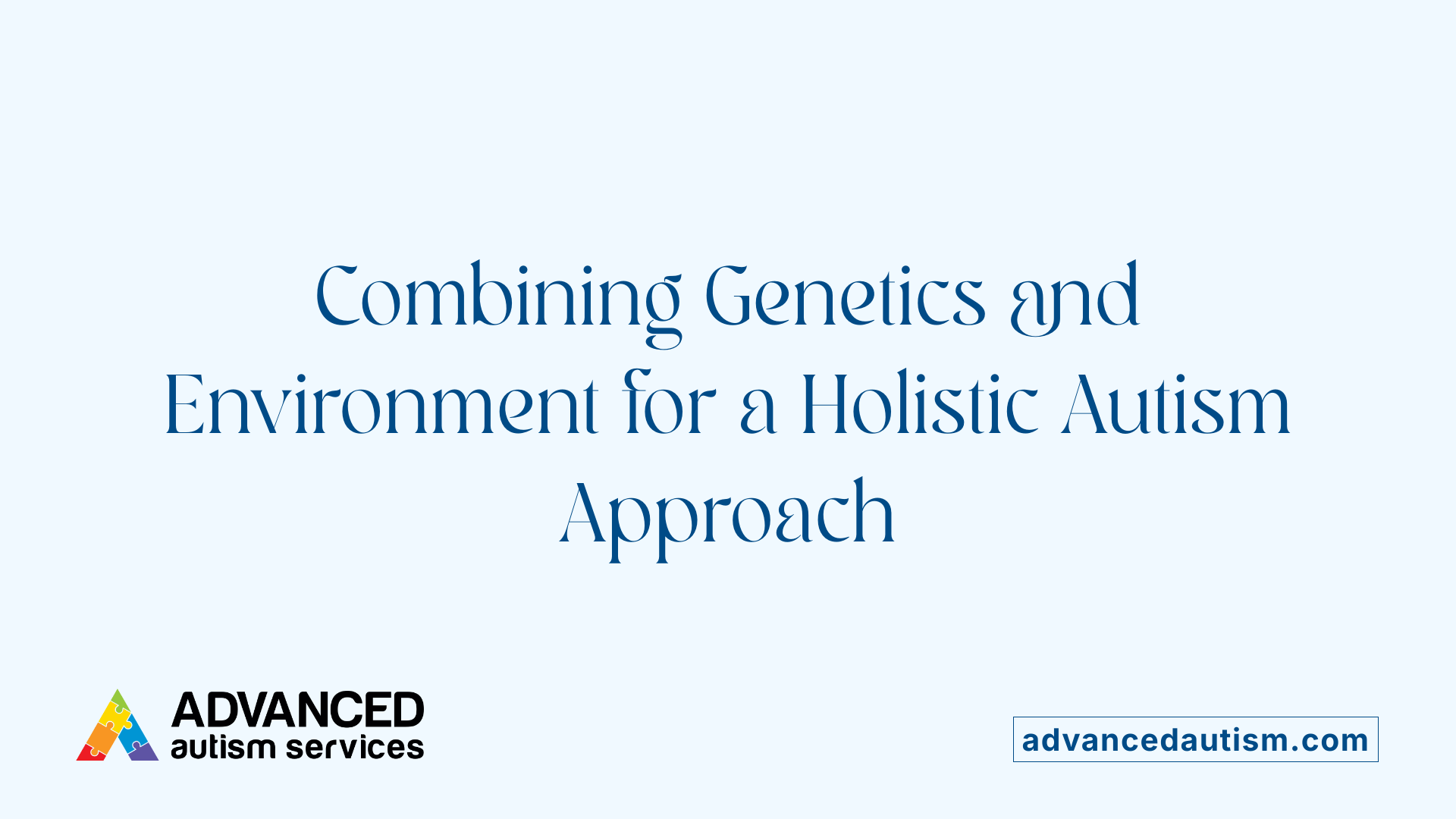
How do environmental factors influence people with autism?
Environmental influences significantly shape the experiences of individuals with autism. Many autistic people have heightened sensory sensitivities, reacting strongly to stimuli such as bright lights, loud noises, or certain textures. This can lead to discomfort or distress, especially in overwhelming environments.
To support and include autistic individuals, environments can be adapted to reduce sensory overload. Practical measures include dimming lights, decreasing noise levels, and offering sensory tools like noise-canceling headphones or textured objects. Creating designated quiet spaces or sensory maps helps autistic people navigate unfamiliar settings comfortably.
Organizations and communities can also implement autism-friendly practices. These may involve offering special hours during which sensory stimuli are minimized, training staff to understand sensory sensitivities, providing visual supports, and sharing accessible information.
These environmental modifications can lessen sensory overload, improve well-being, and foster inclusive spaces. The goal is to help autistic individuals feel more comfortable, secure, and accepted in various settings.
What is the significance of gene-environment interactions?
The connection between genes and environment, known as gene-environment interaction, plays a vital role in autism development. While genetic factors establish a foundation for neurodevelopment, environmental exposures can influence how genes are expressed, especially during sensitive early-life periods.
Epigenetic mechanisms such as DNA methylation, histone modifications, and noncoding RNAs enable environmental factors—like toxins, maternal health issues, or nutrition—to modify gene activity without changing DNA sequences. These changes can affect brain development, neural connectivity, and sensory processing.
Research shows that individuals with certain genetic variants may be more vulnerable to environmental harms. For example, a genetic predisposition combined with prenatal exposure to air pollution or pesticides can increase autism risk. Conversely, protective factors like prenatal folic acid intake can mitigate some risks in genetically susceptible individuals.
Understanding these complex interactions helps researchers develop more precise prevention and intervention strategies. It highlights that autism is not solely driven by genes or environment but by their dynamic interplay.
Implications for research and clinical practice
Recognizing gene-environment interactions influences how scientists approach autism research. Future studies are likely to focus on identifying specific genetic markers that interact with environmental exposures, offering insights into tailored prevention methods.
Clinically, this underscores the importance of comprehensive risk assessments during pregnancy and early childhood. Healthcare providers can advise prospective parents about avoiding toxic exposures, managing maternal health conditions, and optimizing nutrition.
Moreover, early intervention programs can be customized considering both genetic and environmental factors, aiming to support neurodevelopment effectively. This integrated approach fosters not only better understanding of autism’s etiology but also promotes personalized care to improve outcomes for autistic individuals.
Research and Future Directions in Environmental Autism Research
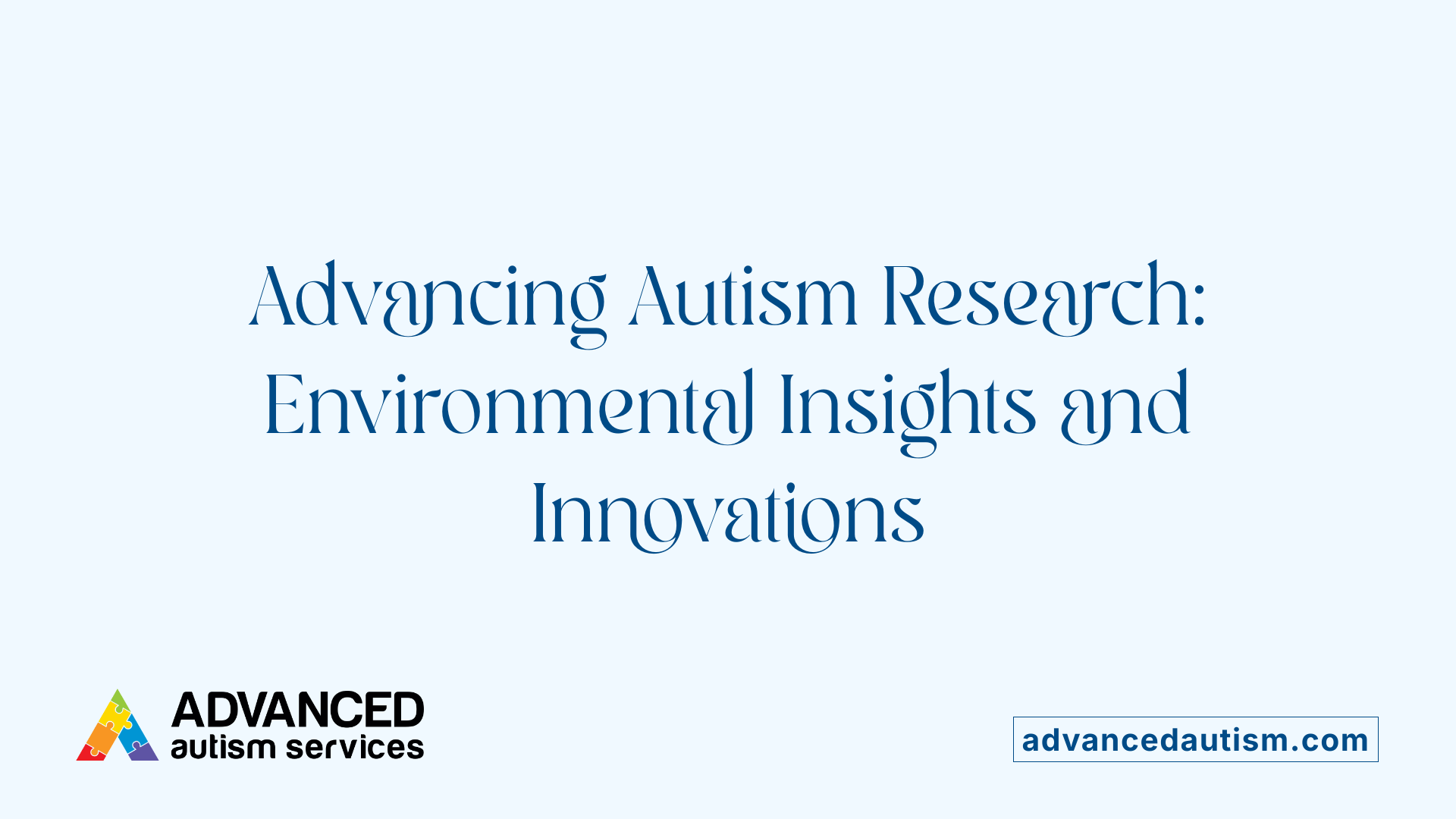
How does current research link environmental factors to autism?
Modern research on autism’s environmental influences is highly multidisciplinary, combining large-scale epidemiological studies, systematic reviews, and meta-analyses. These investigations aim to identify and understand how various environmental exposures during pregnancy and early childhood contribute to autism risk.
Epidemiological studies have consistently associated factors like advanced parental age, prenatal exposure to air pollution, pesticides, heavy metals (such as mercury and lead), and endocrine-disrupting chemicals like bisphenol A and phthalates with increased autism likelihood. These studies often analyze population data to find patterns and correlations, adjusting for genetic and socioeconomic factors.
Neuroimaging research offers insights into how environmental toxins may alter brain structure and function. Using techniques like MRI and diffusion-weighted imaging, scientists observe differences in brain connectivity and organization in children exposed to environmental risks. These structural and connectivity variations often correlate with autistic behaviors and symptom severity.
At the molecular level, studies delve into how environmental toxins impact gene expression and epigenetics. For example, certain chemicals can induce DNA methylation or histone modifications, which influence neuronal development and neural signaling. The timing of exposure is critical—prenatal periods are particularly vulnerable because of rapid brain development.
Emerging evidence emphasizes the importance of dose, duration, and combinations of exposures, suggesting that multiple environmental factors can have additive or synergistic effects on autism risk. For instance, simultaneous exposure to air pollution and heavy metals might amplify adverse neurodevelopmental outcomes.
These findings have significant implications for public health policies. Many authorities advocate for reducing environmental toxins, such as implementing stricter air quality standards, banning or limiting harmful chemicals in consumer products, and promoting safer agricultural practices.
Advancements in neuroimaging and molecular research
Recent developments include high-resolution neuroimaging techniques enabling detailed mapping of autistic brain networks influenced by environmental factors. PET scans and advanced MRI analyses help identify metabolic dysfunctions and connectivity disturbances associated with toxin exposure.
Molecular research has identified pathways affected by environmental agents, such as oxidative stress, neuroinflammation, and disrupted neurotransmitter systems. Studies also explore how gene-environment interactions modulate susceptibility, paving the way for personalized prevention and treatment approaches.
Implications for prevention, policy, and personalized medicine
Understanding environmental contributions to autism opens avenues for preventive strategies, such as advising pregnant women to limit exposure to pollutants and chemicals. Public health initiatives may focus on reducing air pollution levels and regulating hazardous substances.
Policy changes informed by science can lead to safer environments, especially for pregnant women and young children. Moreover, integrating genetic information with environmental data enables the development of personalized risk assessments, which can guide early interventions and tailored support.
Overall, ongoing research aims to translate scientific insights into practical measures, improving outcomes and reducing autism prevalence linked to modifiable environmental factors.
Moving Toward Informed Prevention and Awareness
Understanding the environmental causes and risk factors of autism is essential for developing preventative measures and informing public health strategies. While genetics play a dominant role, exposures during critical developmental windows—such as maternal health issues, chemical toxins, and birth complications—significantly influence neurodevelopment and ASD risk. Myths, particularly regarding vaccines, have been thoroughly debunked by rigorous scientific studies, emphasizing the importance of accurate information. Prevention efforts focusing on reducing environmental toxicants, promoting maternal nutrition, and early screening can mitigate some risks. Continued research into gene-environment interactions and epigenetic mechanisms will enhance our ability to predict, prevent, and treat autism, ultimately fostering a more informed and supportive society.
References
- Autism | National Institute of Environmental Health Sciences
- Environmental factors influencing the risk of autism - PMC
- Environmental risk factors for autism: an evidence-based review of ...
- What Role Does the Environment Play in Autism?
- What causes autism? | Autism Speaks
- Environmental exposures associated with elevated risk for autism ...
- Prenatal environmental risk factors for autism spectrum disorder and ...
- Autism Environmental Factors



